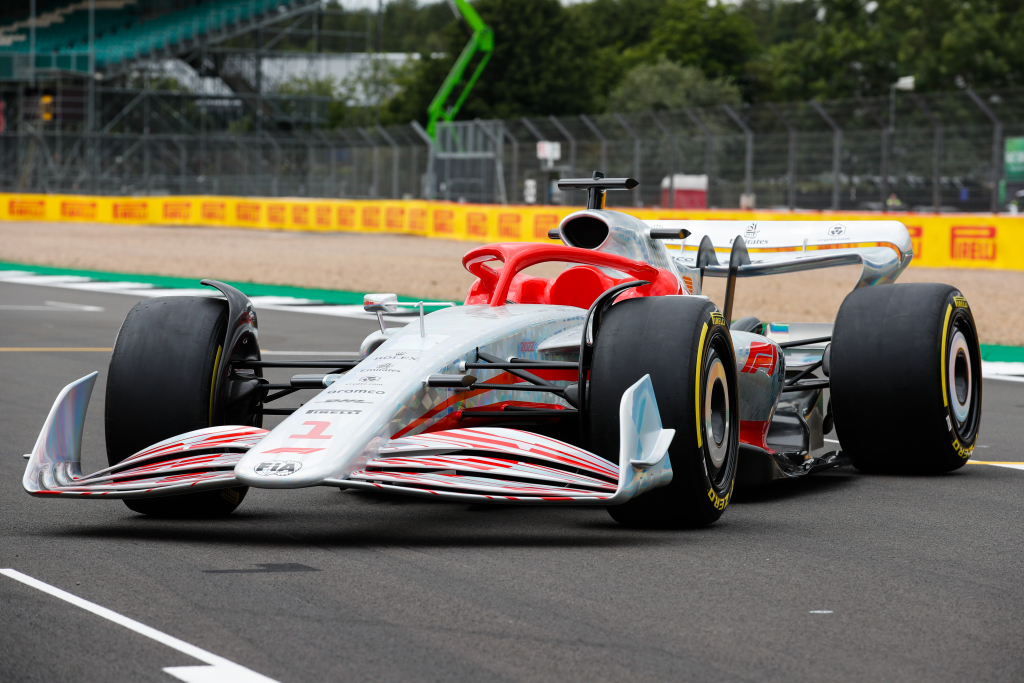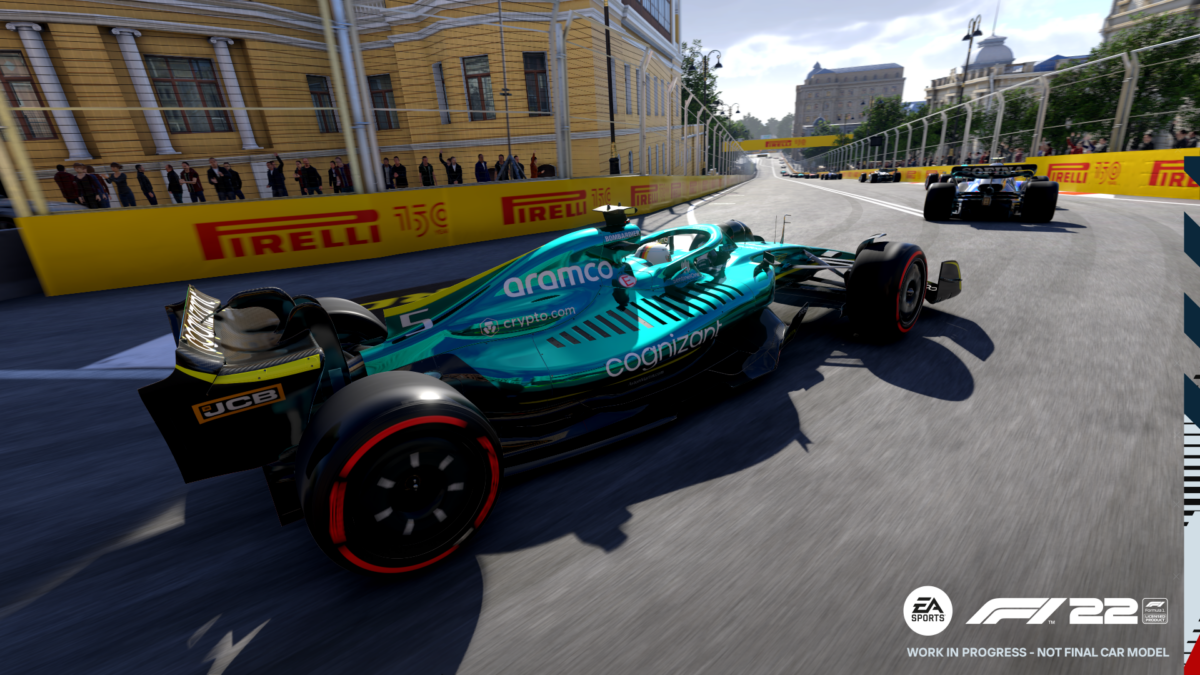As an iterative sequel F1 2022 is a mild disappointment.
There has never been a better time to be an F1 fan. The sport’s sprint into the ultra mainstream – driven by the fiery drama of Netflix’s Drive to Survive – coincided with last year’s hotly contested season. It was the most contentious in recent history. Then, this year’s season delivered the biggest rule shakeup in a generation. All new cars, budget caps, and yet more circuits on the ever-expanding world tour that is the F1 championship. We’ve seen the long dominant team, Mercedes, lose its footing while dormant icons like Ferrari finally vy for title victory. What a difference a year makes, and what a rollercoaster for newcomers.
[mm-video type=video id=01g6jss6b8ey76xc4z93 playlist_id=none player_id=none image=https://images2.minutemediacdn.com/image/upload/video/thumbnail/mmplus/01g6jss6b8ey76xc4z93/01g6jss6b8ey76xc4z93-431cc07ac72d691fe76029f7f171a85a.jpg]
It’s the ideal jumping on point – a complete reset of the rules enabling closer racing, and unknown ground for all the teams on the grid. For the developers at Codemasters it must feel like both a blessing and a curse: the sport is finally getting the wider recognition it deserves, meaning its long-running F1 series is itself becoming more in demand; but there’s also even greater pressure to deliver an exciting and dramatic digital recreation of the sport’s best and most interesting qualities, all while retaining the hardcore minutiae that the seasoned veterans are expecting when they dive into a new F1 game. As well as adapting to the colossal changes that could just not have been foreseen. Mercedes feeling lucky to get out of Q3 in qualifying? Alonso on the front row in Canada? Kevin Magnussen back at the wheel and Haas contending for top 10 finishes? The world has gone K-Mad.

From that perspective – as an iterative sequel – there’s no doubt that F1 2022 is a mild disappointment. Yes, this is the best the F1 games have ever been. It looks superb, it handles great, and it’s so customizable nowadays that literally anyone of any skill set can dive in and find something to challenge but satisfy them. But for someone who’s been coming back to these games every year for the last dozen, there’s not quite enough here to really provide a step up from F1 2021 or even F1 2020. There are good quality of life improvements, and minor racing updates that add things like formation laps, better pit stops, and some very nice AI reactivity (more on that later), but the biggest back-of-the-box additions feel like misfires.
They’re so superfluous to the actual on-track action. The new “F1 Life” is not really any addition to the game mode but a weird redressing of a main menu where you can pick out an outfit for your avatar, and decide what sofa they’ll have in their tax-evading Monaco mansion. New publisher EA’s influence feels most apparent here, as if it’s pushing you toward buying in-game merch. The big shame is that none of the F1 Life augments the Championship Career experience in any way. The only new modes that impact the career are sporadic PR moments for each new calendar weekend, in which you have the option of undertaking various on-track challenges in a few road cars. This would be fine if the road cars were actually any good, but they handle woefully bad – a big surprise considering the racing pedigree of the developer at the wheel here. It’s a baffling decision that really detracts from the real attraction of the game – the F1.

It’s here that those aforementioned smaller updates are seen. F1’s 2022 rule change has resulted in a totally different aerodynamic philosophy being implemented on the cars, and that is keenly felt in-game. The cars, much heavier in 2022, are much tougher to wrestle into slow corners. It’s most apparent on tracks like Monte-Carlo, in Monaco, which has an infamously tight, low-speed street circuit layout that really pushes the navigability of an F1 car to the extreme. The “ground effect” aerodynamics also seem to impact wet weather driving, and F1 2022 has the most enjoyable (unconfirmed if most realistic) wet weather model in the series to date. It provides just the right level of additional challenge to get around the track without sliding off, without making it so impossible that you’re in the barriers before you even reach turn one.

Difficulty has always been a tricky balance to strike with the F1 games, and 22 does its best. The level of assists available is impressive, all the way from traction control and ABS braking, to automation of the ERS that stores and unleashes kinetic energy for an overtaking boost. There’s a 100-point sliding scale to adjust the core AI simulation toughness, too, which is impressively granular, but gives little to no real indication of what it’s affecting. The result is a need for a fair bit of trial and error to find a challenge that feels good for you.
For me, it was slightly frustrating to find a difficulty that felt right only for the game to occasionally move the goalposts. For example, I settled on 65/100 for our difficulty, which is in the game’s “Hard” bracket. It meant I was really having to nail every braking zone and hitting every apex to get myself onto the front row during qualifying – and doing so felt great. What was confusing, and annoying, was in races seeing how much traction your opponents had out of the corners. It became a case of simply not being able to catch your opponent despite slamming in pretty respectable lap times. Then they’d occasionally brake so early into turns that it just felt silly, meaning you’d even run into the back of them because they essentially brake tested you.

The fix for this is no doubt a challenging one: a game can never fully recreate the feeling of racing against real human beings, and pitching the difficulty to all sorts of players is always going to be impossible. But more clarity on what the difficulty slider impacts would definitely be appreciated. We’re all for challenges, but when a game feels unbeatable, it gets problematic. And when it goes from feeling unbeatable to totally unbelievable within a couple of corners, it loses all immersion that you’re playing an F1 simulation – something the rest of the game works very hard to establish.
AI opponents are more aggressive now, though, making overtaking moves that seem risky, and making your defensive driving all the more important. What’s exciting is that those risks don’t always pay off, with the AI making believable mistakes that add to the realism. In a particularly tough race on Hungary’s Hungaroring, I was chasing Mercedes’ George Russell for some six laps. I couldn’t quite get past him, but I kept up the pressure just enough that he made a mistake running into turn two; locking up his left front tire, running wide, and allowing me an easy overtake. It somehow felt more satisfying and memorable than a great pass of my own.

It’s when you lean into the full simulation of it all that F1 feels best. Sure, you can run a Championship Career with just five-lap races a piece. You’d fly through the races and have a good time doing so. But then you won’t get to experience the dynamism of pit stop strategies, or changing weather, or the management of tyre degradation, or the many new facets of car management you now need to contend with – like the last 20% of a race in Miami, where I had to battle with a dodgy gearbox and failing MGU-K unit, while keeping my teammate behind me to stay ahead in the points standings. It’s those little moments that, even if not a huge step up, will feel worthwhile for returning fans. For newcomers? Welcome to your F1 life.
Written by Sam White on behalf of GLHF.
[listicle id=1859645]






